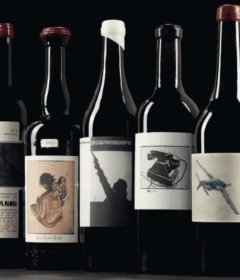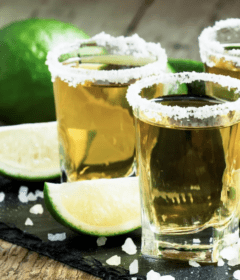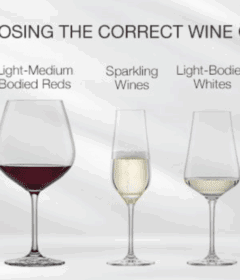A Guide to Wine Tasting
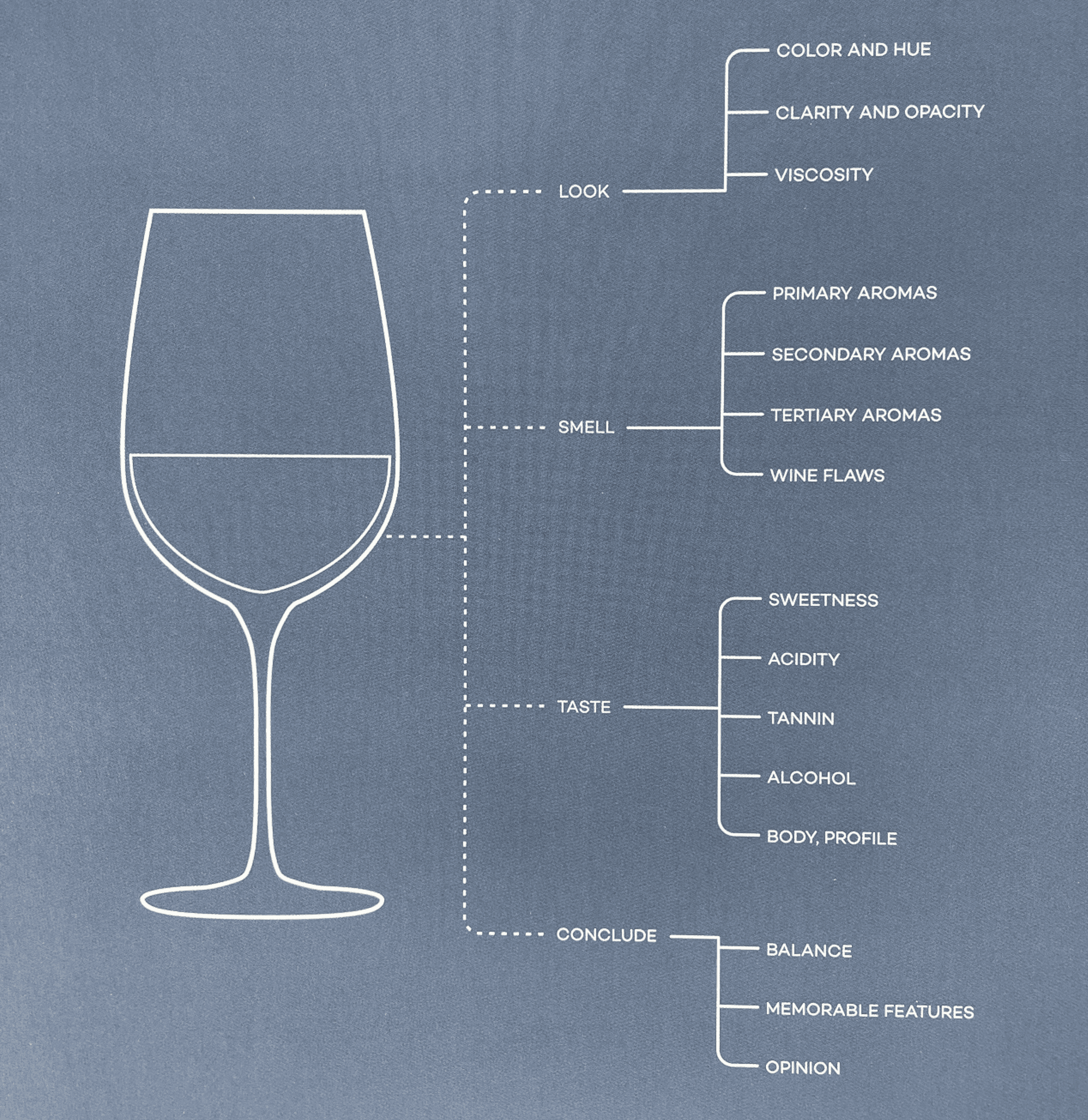
A Guide to Wine Tasting – The 4-step wine tasting method is a professional tasting technique that focuses a taster’s ability to separate and identify key characteristics in a wine and improve flavor and taste memory.
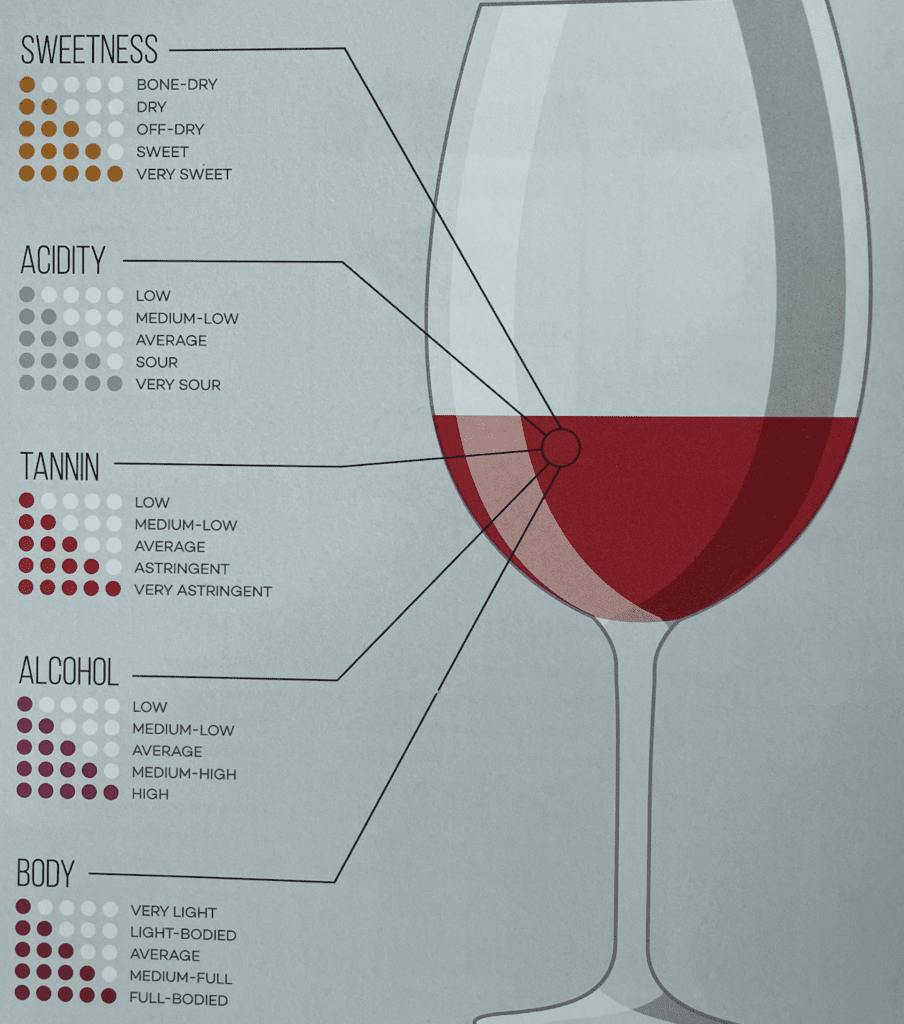
The Essential Characteristics of Wine
Sweetness
Sugars are the main source of perceived sweetness in wine, and they come in many forms.
Because fructose molecules interact with the sweetness receptors on our taste buds at a very high rate of efficiency, fructose tastes twice as sweet as glucose.
Acidity
Acids are crucial in boosting the effect of sulfur dioxide, which essentially protects wines from spoilage and becoming rotten.
A good acidity level also fends-off most unwanted bacteria, as these compounds are unable to survive in low pH solutions.
Tanin
Tannins can stem from four primary sources: the grape skins, pips (seeds) and stems, and the wood barrels used during aging.
They provide texture and mouthfeel to wine as well as a sense of weight and structure.
Tannins create the drying sensation in your mouth when you drink a red wine.
Alcohol
It effects the taste, texture, and structure of the wine itself.
Alcoholic strength is the ethanol (the main product of fermentation) in wine.
Body
A wine’s body describes how heavy or light a wine feels in your mouth.
Understanding the type of body a bottle of wine has will make it easier for you to select wines and pair it with foods.
Wine body is broken down into three categories: light body, medium body, and full body.
A Guide to Wine Tasting – How to Taste Wine

A Guide to Wine Tasting – TASTE
Try coating your mouth with a larger sip of wine followed by several smaller sips so that you can isolate and pick out flavors.
Try to pick out at least 3 fruit flavors and 3 other flavors-one at a time.
TIP: Spitting is more common at professional tastings.
A Guide to Wine Tasting – IDENTIFY
Identify where the basic wine traits hit your palate:
Sweetness is toward the front.
Acidity makes your mouth water.
Tannin is textural and dries your mouth out like wet tea bag.
Alcohol feels like heat in the back of your throat.
A Guide to Wine Tasting -PROFILE
Now that you’ve tasted the wine, create a mental profile (or write one down) of the wine.
Try to organize the flavors and aromas by their category.
For example, if you taste vanilla, it might be due to oak.
TIP: You can cross-reference the variety section of this book for hints on how to categorize flavors.
A Guide to Wine Tasting – Wine Smell Wine

A Guide to Wine Tasting – SMELL
Hold your glass just under your nose and sniff once to “prime” your nose.
Then swirl your wine once and smell again.
This time, smell the wine longer and slower but just as delicately. Switch between sniffing and thinking.
A Guide to Wine Tasting – LEARN TO SWIRL
Swirling wine releases aroma compounds into the air.
A Guide to Wine Tasting – OVERLOADED
Neutralize your nose by sniffing your forearm.
A Guide to Wine Tasting – PERFUME
Avoid wearing strong scents when actively tasting wine.

A Guide to Wine Tasting – AROMAS
Move your nose to different positions around the glass.
Rich fruit aromas are generally found on the lower lip, and floral aromas and volatile esters can be smelled on the
upper lip of the glass.
A Guide to Wine Tasting – PRIMARY AROMAS
Primary aromas come from grapes.
Each variety has a range or possible aromas.
For example, the white wine variety Sauvignon Blanc often smells like gooseberrv or fresh-cut grass.
Primary aromas range depending on the climate where the wine was made and how long the wine has aged.
A Guide to Wine Tasting – SECONDARY AROMAS
Secondarv aromas come from winemaking, specifically, from reactions caused by wine yeast and bacteria.
For example, the aroma of butter found in Chardonnav is from a special bacteria
TERTIARY AROMAS: Tertiary aromas come from aging and controlled interaction with oxygen. For example, the nutty
flavors in vintage Champagne and Sherry are from years of aging.
WINE FAULTS: Some aromas you will encounter are faults. It’s useful to learn them in order to know a good wine from a bad one.
A Guide to Wine Tasting – Alcohol
The alcohol in wine comes from yeast converting grape must (sugar) into ethanol. Alcohol may also
be added to a wine, which is called fortifying.
Alcohol plays an important role in wine aromas.
It’s the vehicle by which aromas travel from the surface of the wine to your nose. Alcohol also adds viscosity and body to wine.
You can sense alcohol in the
back of your throat as a burning sensation.


A Guide to Wine Tasting – You can use terms like “light-bodied” or “full-bodied” to describe the style of wine you want to drink.
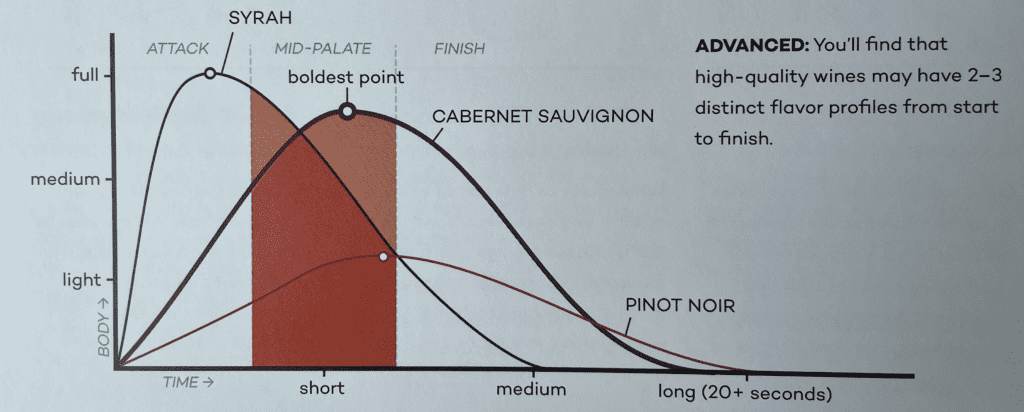
A Guide to Wine Tasting – ACIDITY
Acids are the primary attribute that contribute to wine’s tart and sour flavor.
Most acids in wine come from grapes including tartaric, malic, and citric acid.
Like many fruits, wine lies on the acid side of the pH scale, ranging from about 2.5-4.5 pH (7 is neutral).
One useful thing to know about acidity in wine is that, as grapes ripen, they become less acidic.
Thus, a wine from a cooler climate where it’s hard to ripen grapes will produce wines with higher acidity.
A Guide to Wine Tasting – TANIN
Tannin is a naturally occurring polyphenol found in plants.
Tannin is unique to red wine, since white wines ferment without skins.
In wine, tannin is not necessarily a flavor but a textural astringent taste.
Tannin comes from two sources: grape skins and seeds, and from new wood barrels.
To taste tannin in wine, focus on the texture on your tongue.
A high tannin wine will remove proteins from your tongue, causing a drying and puckering sensation.
This sensation is often described as”grippy.”
High tannin wines act as palate cleansers to rich, fatty meats; cheeses; and pasta dishes.
This is why they are often served with food.
GRAPE TANNIN
Tannin comes from skins, seeds, and stems.
Grape tannin is bitter and astringent but contains high levels of antioxidants.
OAK TANNIN
New oak barrels impart more tannin into wine than used oak barrels.
Wine Folly: The Essential Guide to Wine >>

